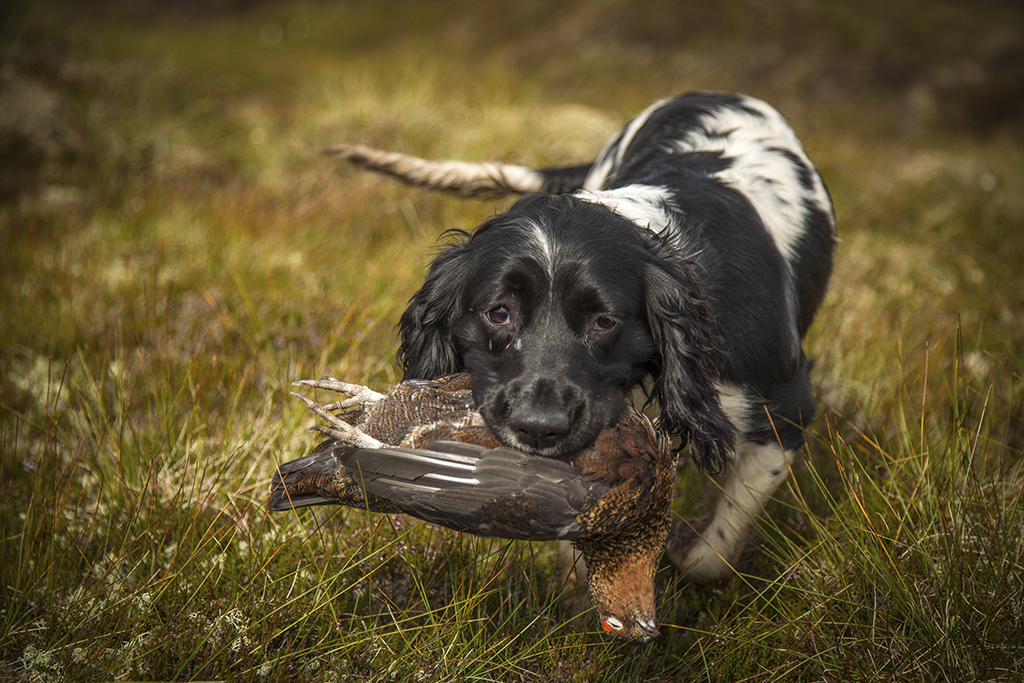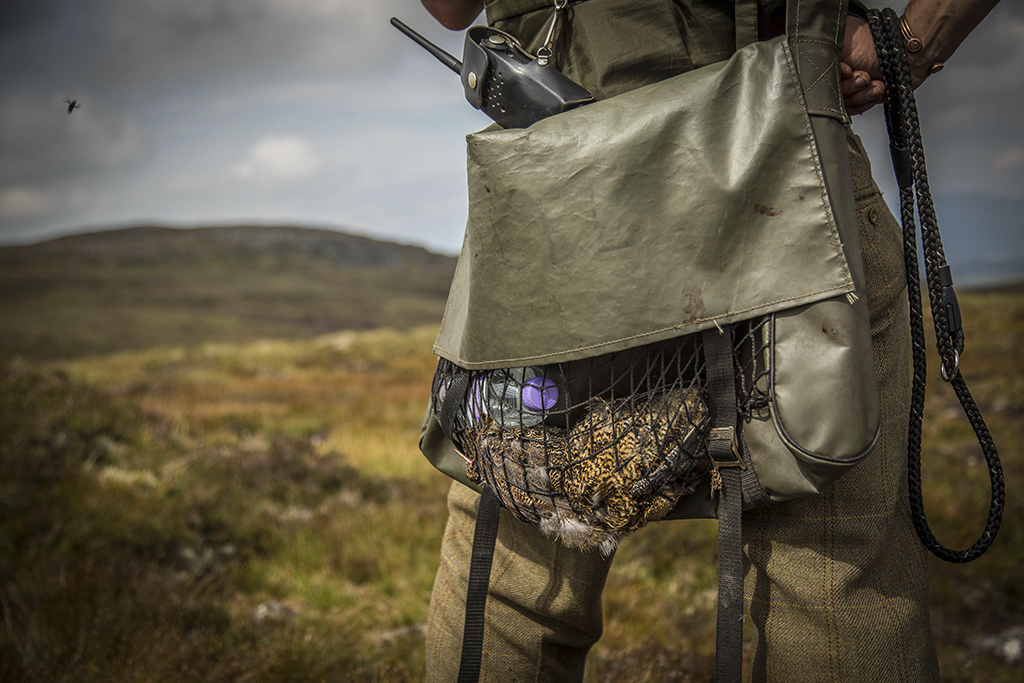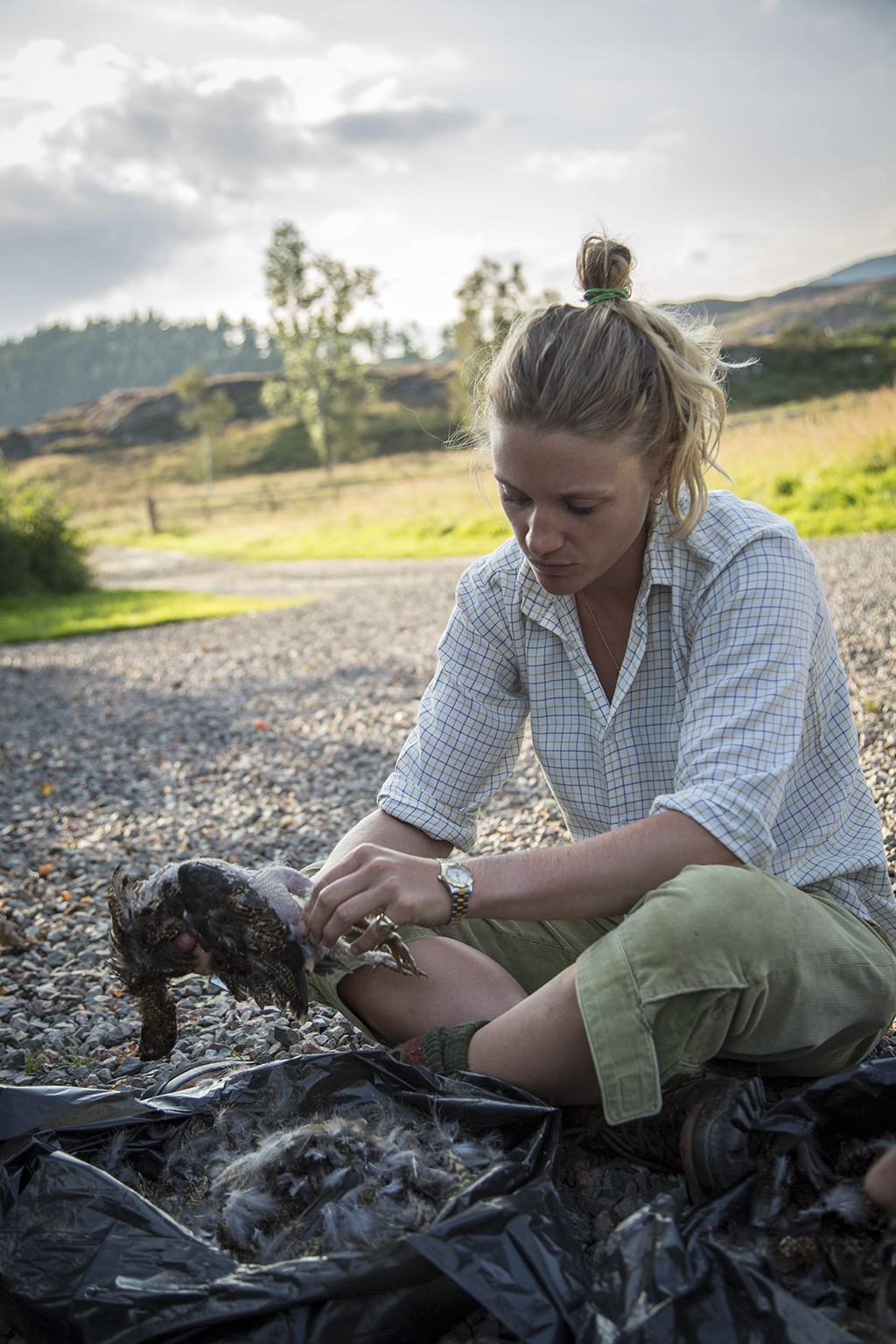
The moor the merrier with affordable shooting
Grouse shooting doesn’t need to cost the earth and a day of walked-up shooting can bring you closer to mother nature than ever before.
A dozen exhausted bodies collapsed into the thick heather at the mention of lunch – it had been a strenuous morning, and with six brace in the bag it had been an incredibly successful one too.
Overhead, a pair of golden eagles rode on thermals, mere dots in a wide sky, and the faraway rasp of a raven carried up the strath. We were midway through an epic walked-up day in pursuit of the King of Gamebirds on Dell Estate, an hour west of Inverness – there was an itch that suggested this outing would be a highlight of the season.
As is the way with this medium of the sport, no two days are ever the same.
The joyous certainty of walked-up grouse shooting, however, is that it takes place within Mother Nature’s most awesome offerings: there can be no doubt that the upland moors epitomise Scotland’s iconic postcard beauty.
Endless violet massifs stretched to the left and right of the line as we set out on the first leg towards the far march, hopping in and out of deep peat trenches, while mud-stained burns tumbled and coiled towards secluded lochs holding small brown trout. These hinterlands are proof that true wilderness, where nature rules, free from the destructive scalpel of mankind, still exists in the UK.

A fine retrieve
Walked-up days take you into the heart of this beauty; the shooting as wild and as natural as the surroundings. It doesn’t have to cost the earth either – the average price for a brace of walked-up grouse is £100 plus vat. This custom harks back to the golden days of how it used to be, before the advent of large driven spectacles and demand for amplified luxury.
Nowadays, the bill for a day starring all the bells and whistles can run well into five figures – this alone gives reason to the renaissance in walked-up shooting. Forget extravagant elevenses. Forget the cavalcade of spotless Range Rovers heading from drive to drive. Forget the sky turning black with vast packs of grouse similar to starling flocks at dusk. Up here it’s just you, the small team and the elements: how it should be.
The bag size is of secondary importance when in such distinct settings. The occasion and company take precedence. Bags depend on the conditions, how straight the team can shoot and, more importantly, the success rate of the spring breeding – owners and keepers are chary to never overshoot their populations, electing to leave the moor with an optimal number at the close of the season on December 10.

The lunchtime bag
If populations are fragile, estates prefer not to sell days rather than risk future sustainability. Guns must be sympathetic to this season-to-season variance. You must also be fit – a day stomping the moor is a taxing workout, but there is wonderful satisfaction in knowing you have earned your bag rather than been ferried from one butt to the next with the option of a heated massage seat between drives.
Each bird grassed is remembered and treasured, there is no such thing as an easy shot when trying to decipher the line and pace of a grouse that is flying away from you. An Archimedean understanding of physics wouldn’t go amiss as grouse are the fastest British gamebird, capable of over 60mph on the wing.
Excited anticipation accompanies every step and concentration is constantly tuned into overdrive. From nowhere a covey, or single bird, explodes into the air and rapidly reaches an innate speed that keeps them safe from the razor-sharp talons of peregrine falcons. Guns must be equally as swift. The RSPB has made clear its lack of issue with the conservational conducts of walked-up shooting, reserving their opposition for driven days.
Covering such large tracts of the moor allows you to witness the lack of incursion to the natural ecosystem, bar heather burning to bolster regeneration. You feel like a visitor to an untamed land. You also get to spend quality time quizzing and listening to the gamekeepers, who have a symbiotic relationship with the hill.

Amy Till plucking grouse to be eaten that evening
These men and women are the unsung gardeners of Scotland, maintaining and preserving around a million hectares of Scottish moorland for the purpose of grouse shooting, to the benefit of all manner of flora and fauna. As they depend on the moor for their livelihoods, in turn the wildlife and the moor depend on them. To quote Nicholas Soames, the Tory MP, without keepers the uplands would become ‘an ornithological desert’.
It is little wonder that the people who work on these unique and remote estates tend to stick around. Why would they leave? Keepers, underkeepers and beaters have seen the moor in both its glory and glut over the years. Their faces show the effort they have put into these hallowed lands. Their characters show that they wouldn’t have it any other way. Crucially, walked-up shooting instils great ethics in the younger generation; the generation that will be responsible for defending an industry under relentless scrutiny.
In August 2016, Mark Avery’s petition calling for a grouse shooting ban collected over 100,000 signatures, forcing the movement to be recognised by MPs. The motion was rejected by the Government on the grounds that it would be an ‘epic gamble for rural economies’, but it will certainly not be the last attempt to relegate grouse shooting to the archives.
On the moor, children are taught about the wonders and ways of the countryside, the reasoning and appreciation behind the killing of a wild bird, and to acknowledge the tireless exertions of those who spend their lives safeguarding the land. It is vital they understand that there is so much more to shooting than just shooting. It is about the occasion, the camaraderie, the surroundings, and the butterfly effect that sensible grouse moor management has on the wider biological network. Walked-up days offer just that.
Refuelled by lunch, the team turned for home, a long beautiful slog over false horizons, with the echo of gunshot ringing through the valley. That evening the whole party feasted on fresh grouse – plenty to go around with a final tally of nine brace. It simply doesn’t get better with a gun in hand. Or, in fact, without one.
(This feature originally appeared in 2017)
TAGS

